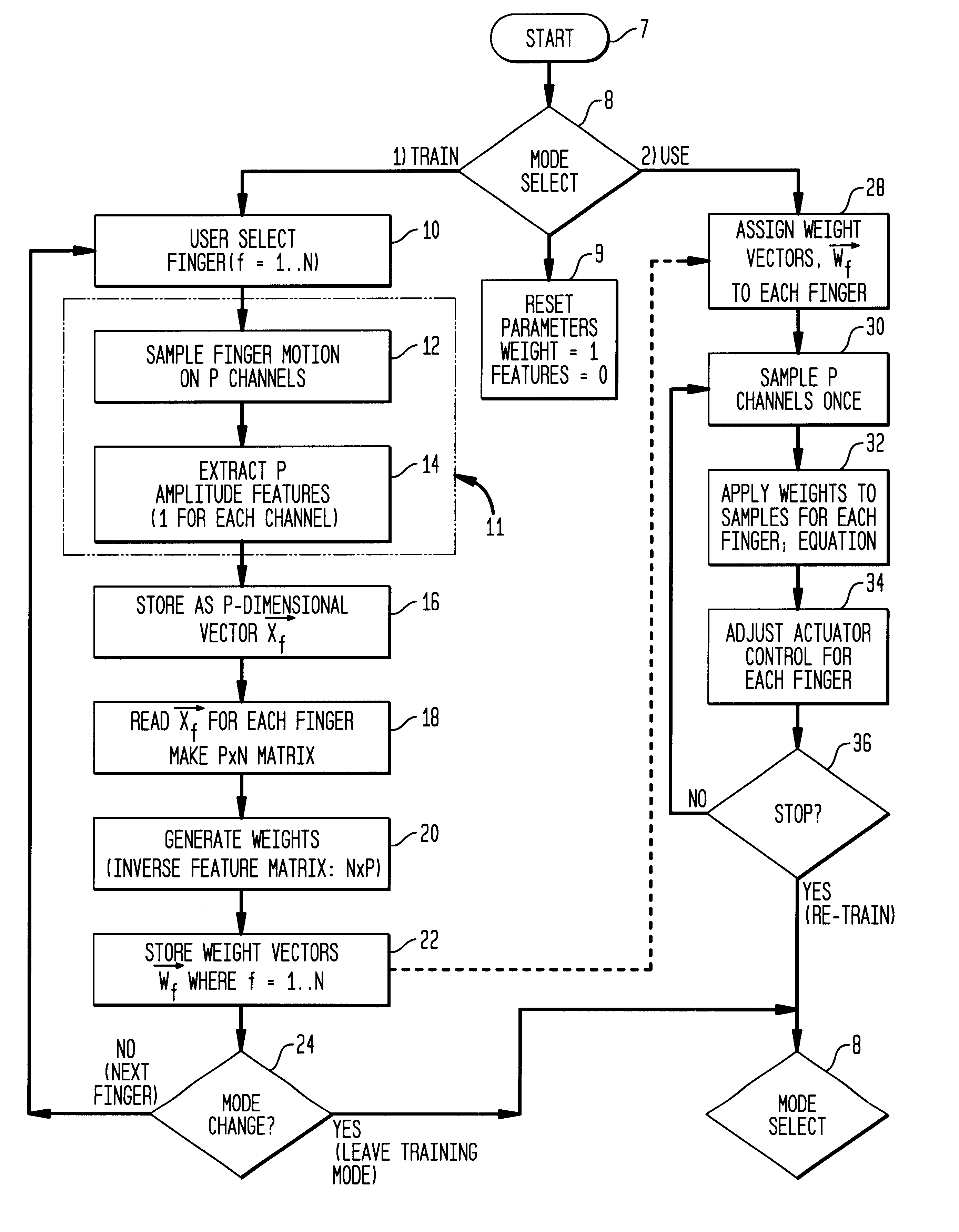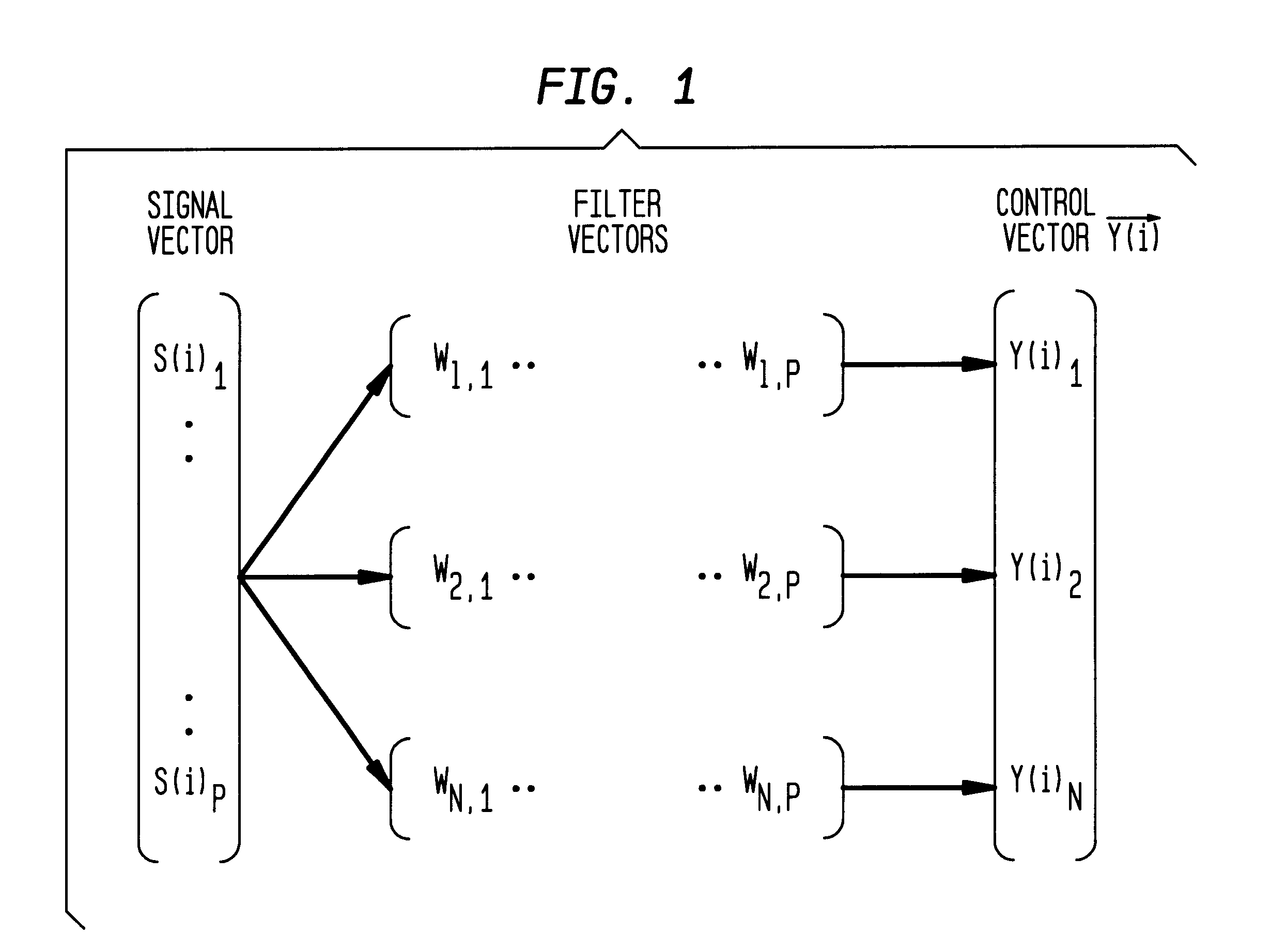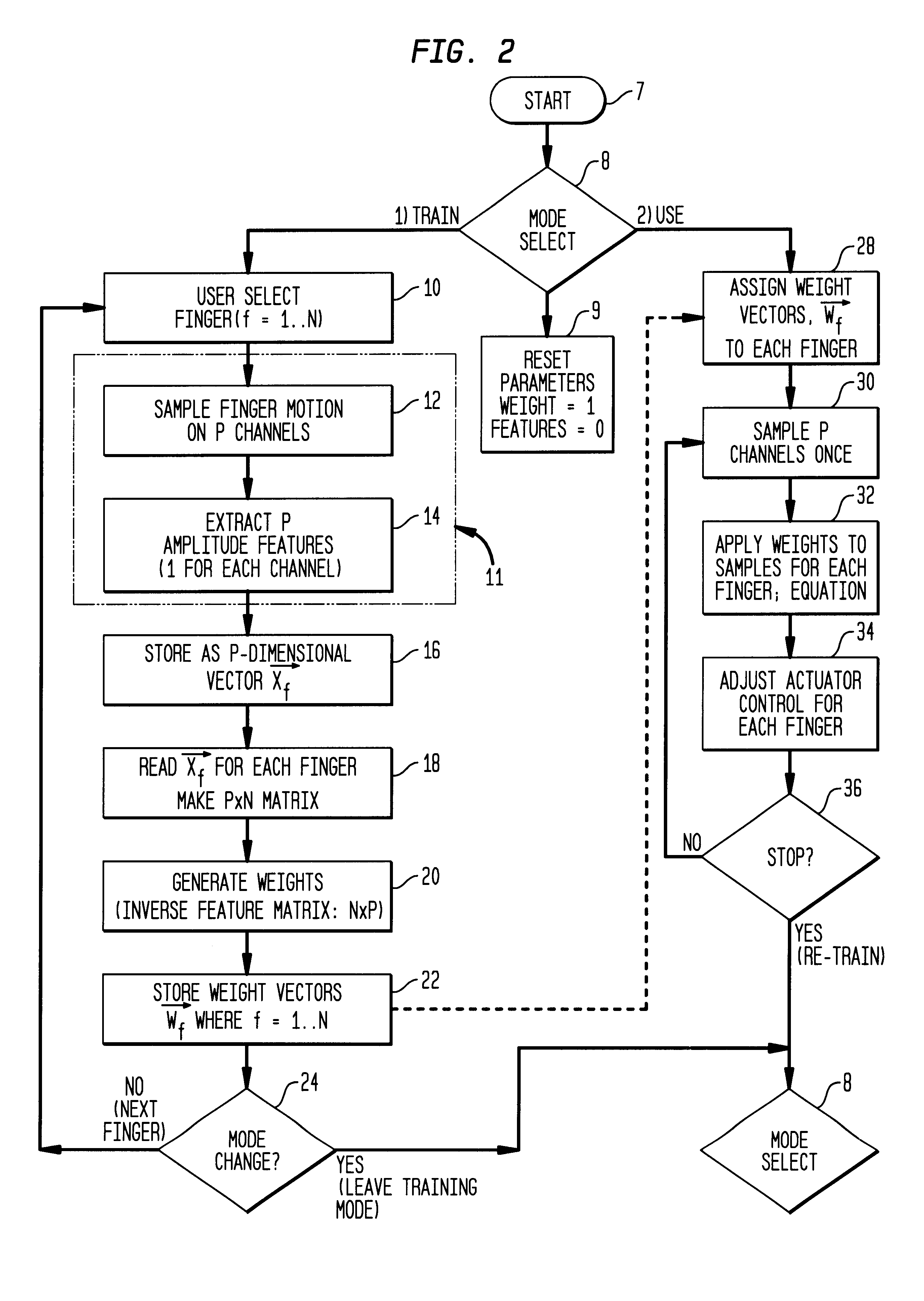Methods of biomimetic finger control by filtering of distributed forelimib pressures
a biomimetic and finger control technology, applied in the field of biomimetic finger control by filtering of distributed forelimib pressures, can solve the problems of limited dexterity, limited dexterity, and limited dexterity for more dexterous motions, and achieve the effect of improving dexterity
- Summary
- Abstract
- Description
- Claims
- Application Information
AI Technical Summary
Benefits of technology
Problems solved by technology
Method used
Image
Examples
Embodiment Construction
Results are presented from a 28-year old male amputee, of 10 years duration, with a 4-inch residuum (subject A). A second below-elbow amputee male subject (B) was also tested, who is 70 years of age, and received the injury approximately 50 years prior. Both subjects were tested following informed written consent, after approval of the study from the University Institutional Review Board. The subjects were able to perceive and attain motion control over 3 phantom fingers. This observation provided rationale for selecting a 3-finger control filter. Eight locations for sensor placement were determined by palpating the forearm during volitional finger motions, as described in Abboudi et al. A silicone sleeve custom fit for the subject was constructed, incorporating the M-P sensors into its structure at the chosen location. A custom socket was then placed over the sleeve, tightly enclosing the limb and sensors. Six of the 8 sensors were clustered around the flexor digi...
PUM
 Login to View More
Login to View More Abstract
Description
Claims
Application Information
 Login to View More
Login to View More - R&D
- Intellectual Property
- Life Sciences
- Materials
- Tech Scout
- Unparalleled Data Quality
- Higher Quality Content
- 60% Fewer Hallucinations
Browse by: Latest US Patents, China's latest patents, Technical Efficacy Thesaurus, Application Domain, Technology Topic, Popular Technical Reports.
© 2025 PatSnap. All rights reserved.Legal|Privacy policy|Modern Slavery Act Transparency Statement|Sitemap|About US| Contact US: help@patsnap.com



